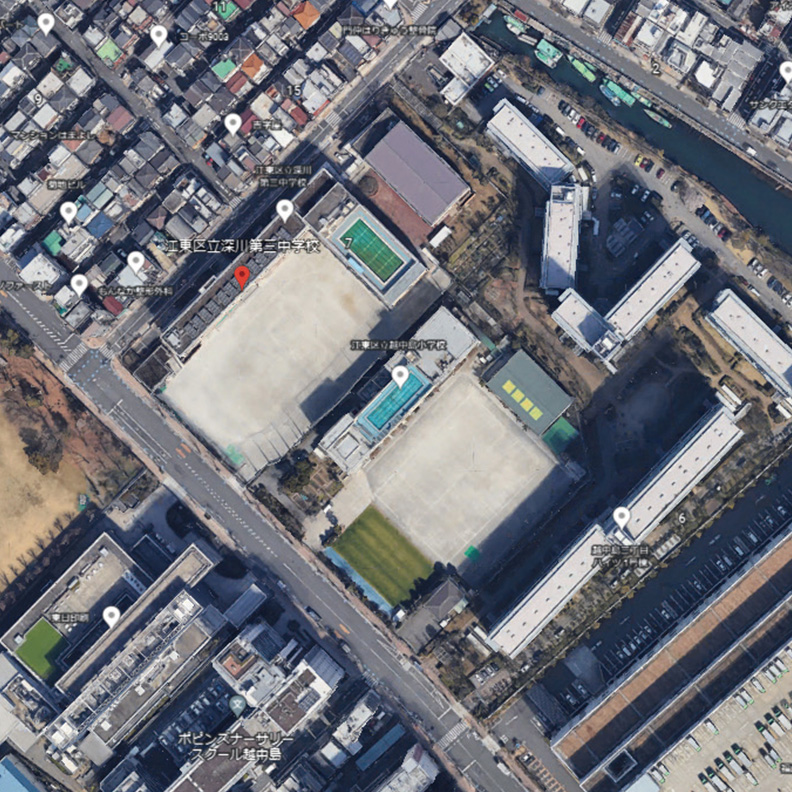
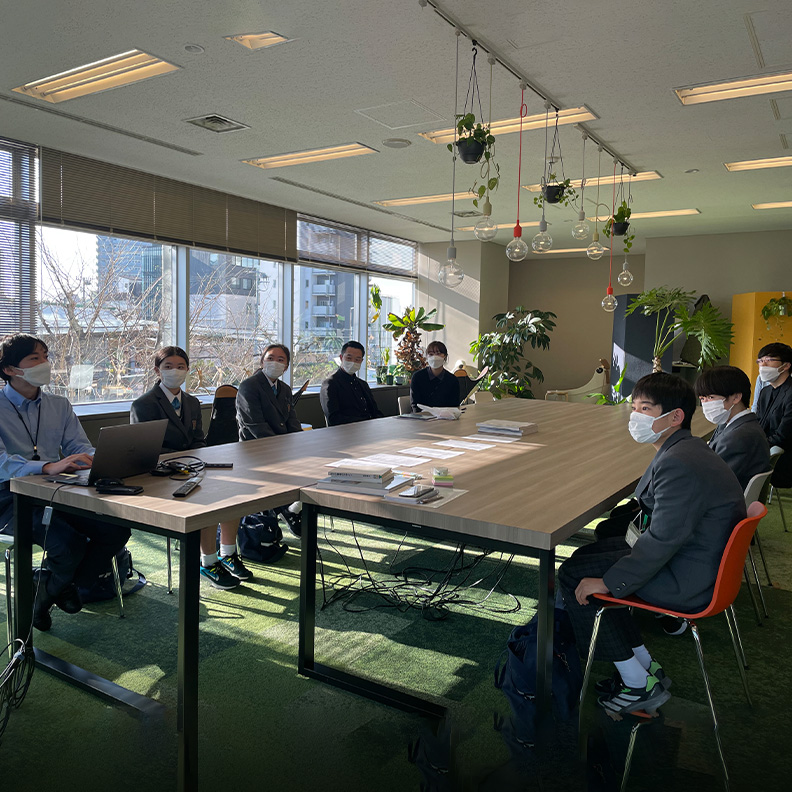
Kume Sekkei offers a work experience program in collaboration with Fukagawa No.3 Junior High School. The program, put on hold for the past few years because of the coronavirus disaster, resumed in February 2023 for the first time after a long interval. The instructors were our first-year employees. They gradually eased the tension of the junior high school students as they began discussing the assignments.
This year's assignment was the "Fukagawa No.3 Junior High School and Etchujima Elementary School Reconstruction Project." By using familiar schools as the theme, we thought that the junior high school students would be able to give shape to their various thoughts and ideas.
The students began the three-day program with adults in an unfamiliar office environment.
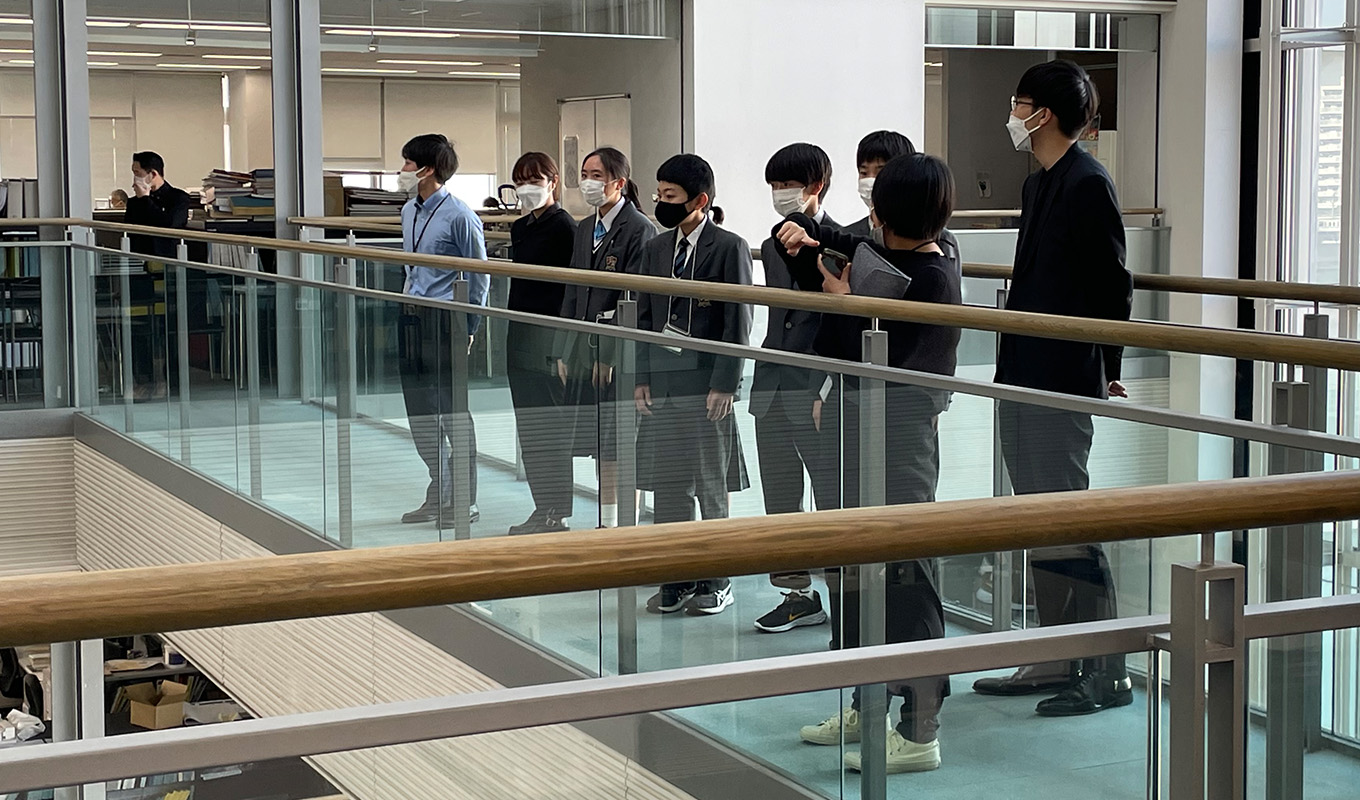
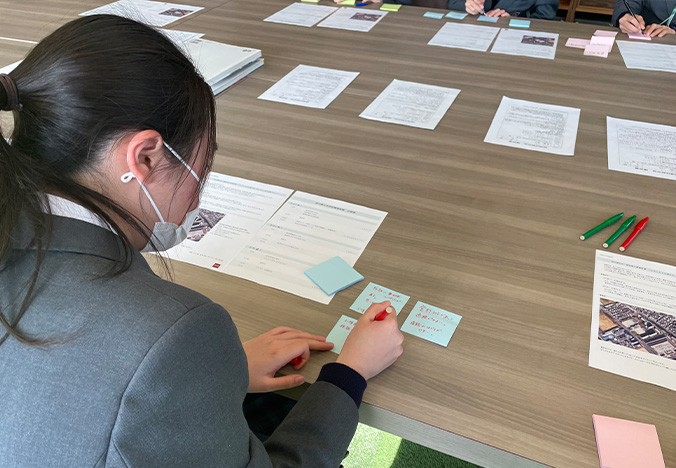
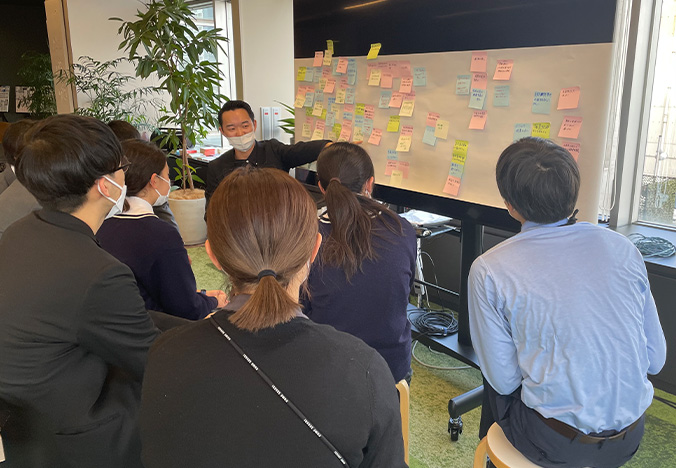
Day 1. The first day started with learning about Kume Sekkei. During the office tour, the students walked through the workspaces to get a feel of the architectural firm's atmosphere. They were still a little nervous, but from how they walked around, we could see their eagerness to know what was happening in the office. After the office tour, the instructors explained the program. While the students seemed unsure of what they would be doing, the instructors guided them in a friendly manner.
The tools needed for today's work were sticky notes and markers. They identified good and bad aspects of the school from the perspective of junior high school students using the school in real life and jotted down many of the issues they deal with daily. The issues raised by the students included "no daylight in the school building and schoolyard," "need for more greenery and spaces for relaxation," and so on. The next day, they would start thinking about solutions to these issues and formulate their thoughts and ideas into shapes and expressions.
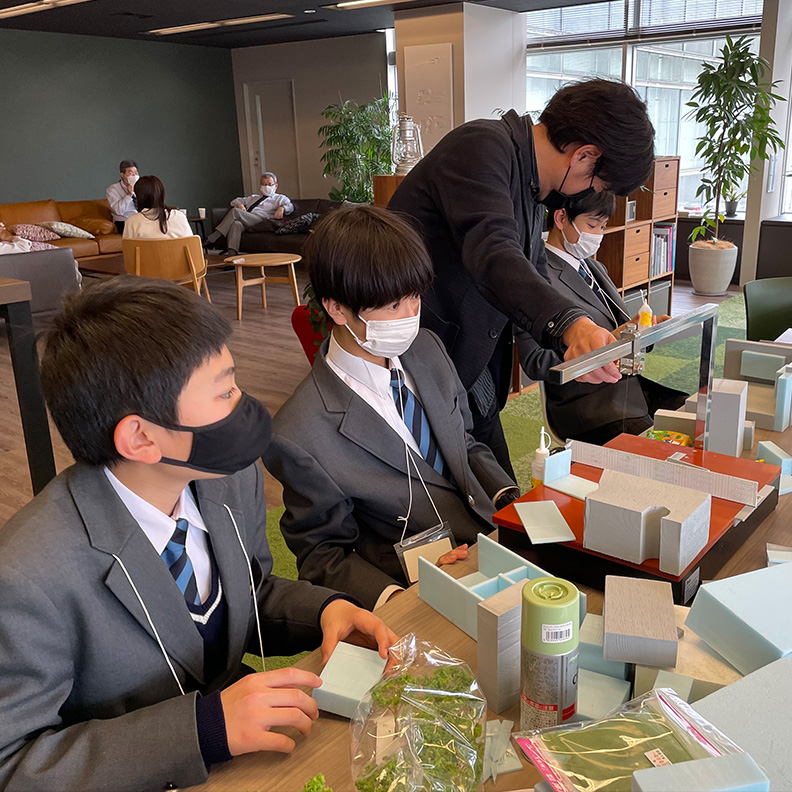
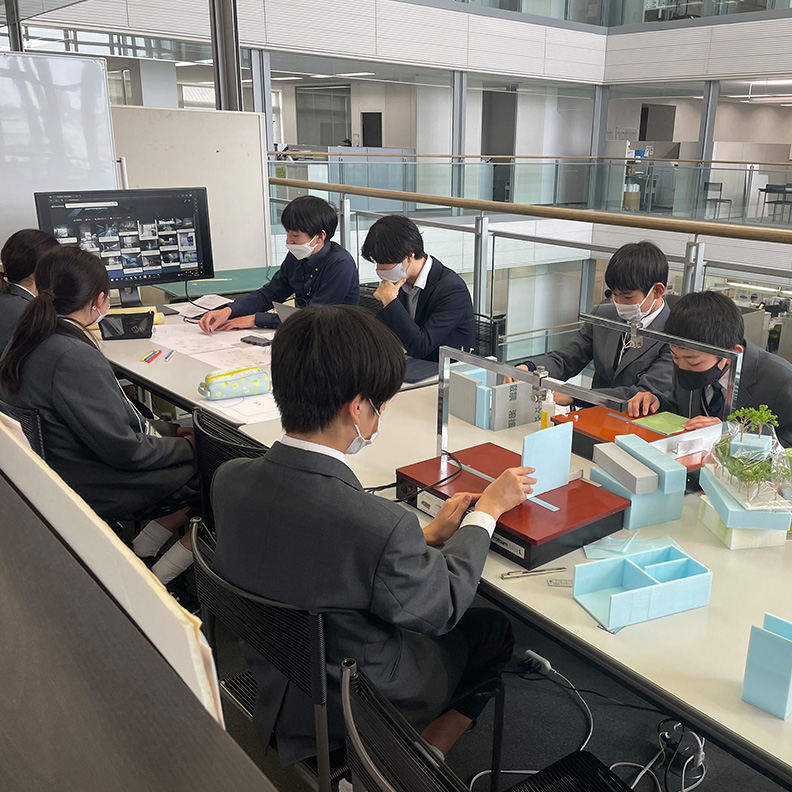
Day 2. From the many issues identified, each selected the one they wanted to solve best and expressed their ideas in models and sketches. Architects use styrofoam and foam-core boards to make study models in the office. We invited the students to experience the process.
They set out to formulate ideas based on advice from their instructors on how they could best express and solve the issues identified on Day 1 in the school building, classrooms, gymnasium, swimming pool, and schoolyard.
As the students began working individually, their unique personalities gradually surfaced. There was a subtle discrepancy in sensibilities between the slightly more experienced instructors and the pure-minded junior high school students, making it difficult for the students to communicate their ideas to the instructors. The instructors carefully considered the best approach based on each student's personality to bring out their unique expression and ensured that they could express themselves in the best way possible.
The students were scheduled to present their ideas for the school reconstruction project on the last day.
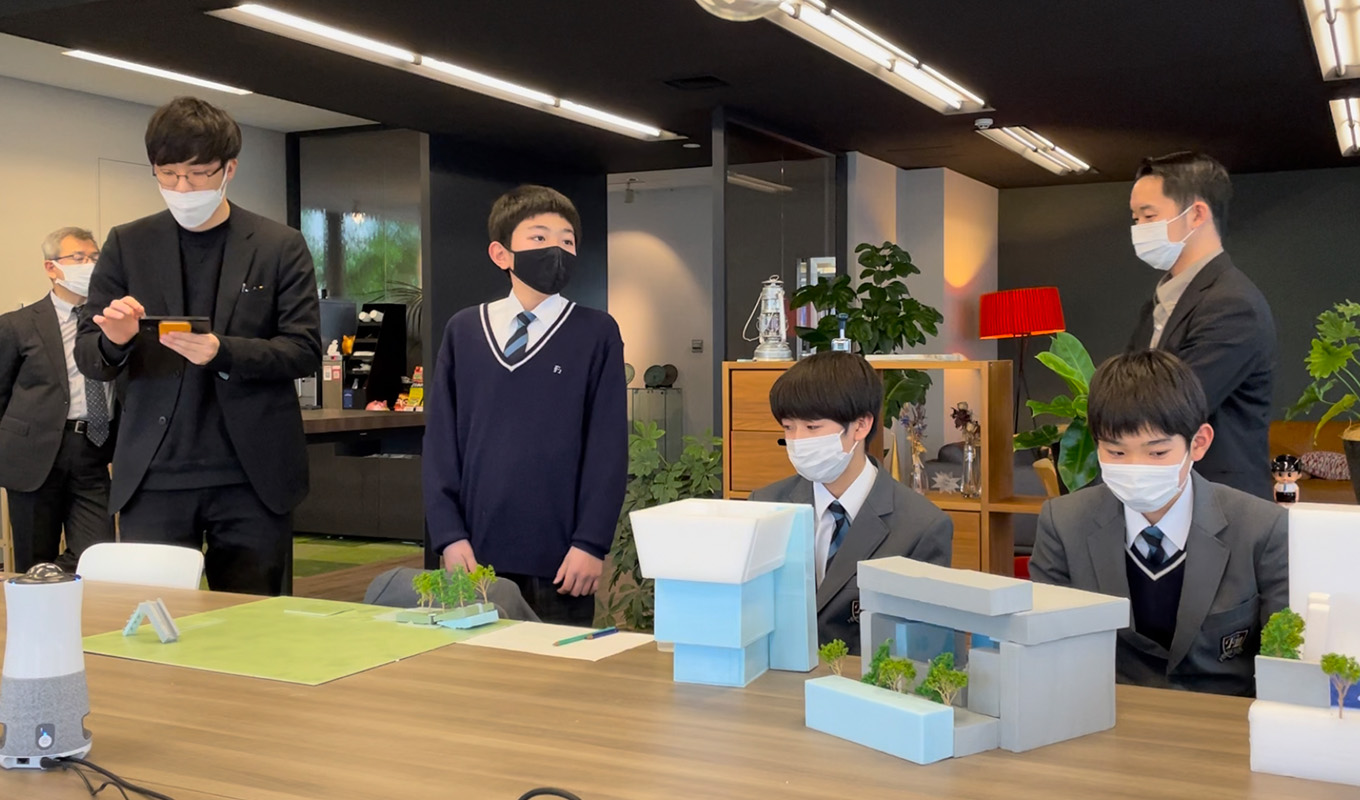
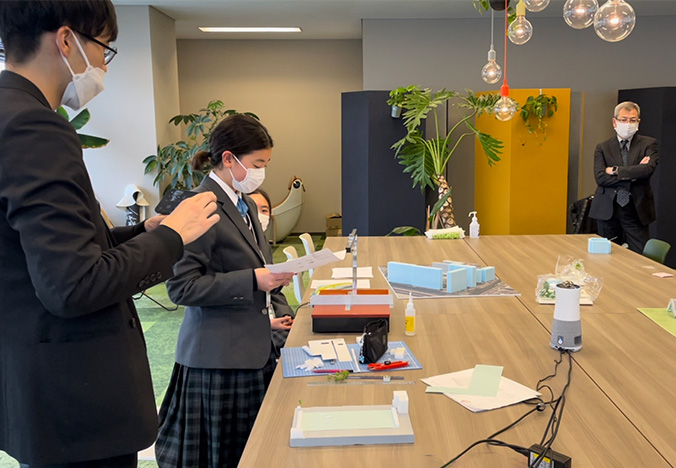
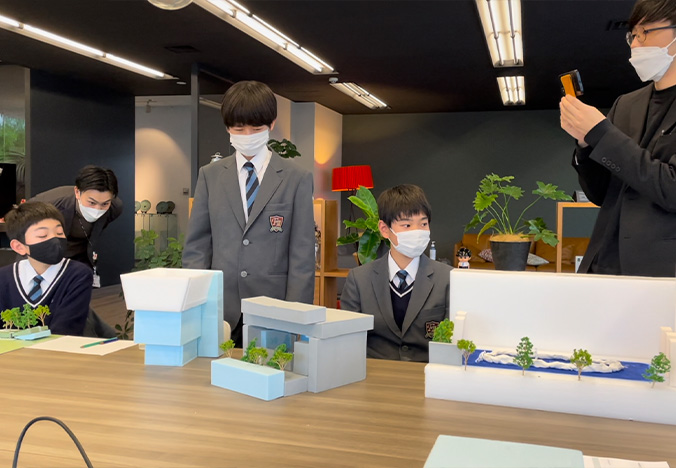
Day 3. At last, it was time for the students to present the reconstruction project. Some were already on track to complete the project, while others were not quite ready. The instructors watched over them anxiously to see if they could make it to the presentation and how they would make the most of the remaining time. As employees began to gather one after another, both at the presentation site and for online viewing, the students' spirits rose. They decided on the presentation order by "rock-paper-scissors," as they typically do in junior high school, and finally began their presentations. The projects included a " stepped school building with steady sunlight," "gymnasium with expanded support area and an elevator," "indoor swimming pool for year-round use," "bright grass field," and "classrooms with excellent ventilation and a view of the greenery with blackboards on three sides." All of them gave excellent presentations. Some of them refused to give up and kept working until the very last minute, and some students were not satisfied with the instructors' advice and stuck to their way of expressing their ideas. The architects who attended the presentation were impressed to see how each student enthusiastically presented their ideas and thoughts.
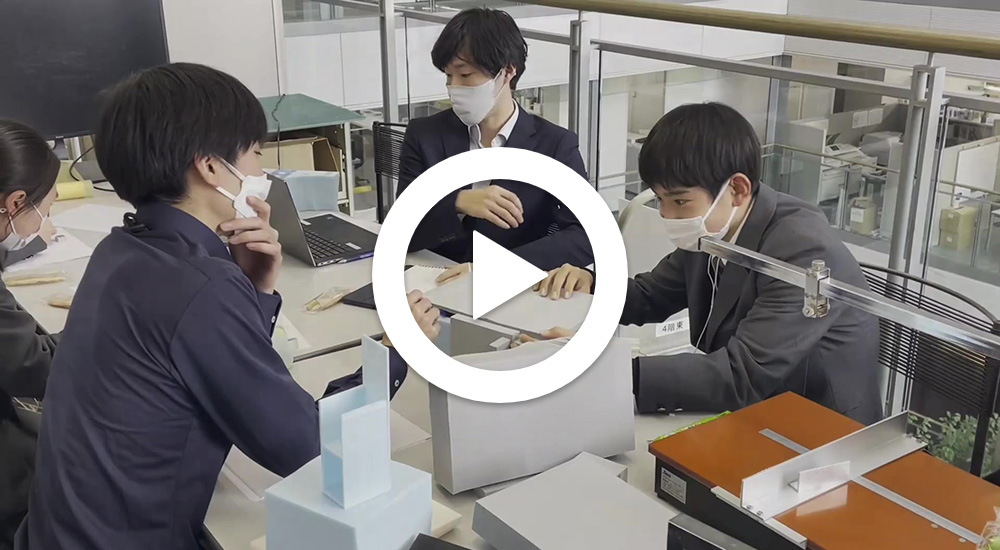
We usually work on school and other public building projects. We spent three long days with the students who are actually using the building, and they shared with us the day-to-day realities of what they are feeling. We hope to reflect some of this knowledge in our designs in upcoming projects. Architects always engage in dialogue with the building's users from a "grown-up" perspective, discussing and considering each other's ideas as we approach the architecture. In the conversation with the junior high school students, there were moments when we felt their strong sense of independence and commitment to their ideas. They reminded us of the genuine feeling we experienced when we first started studying architecture.
We had been thinking only of what we could pass on to the students, hoping to give them the best educational experiences possible. But it was indeed an excellent learning opportunity and a valuable work experience for all participants, in which we learned the importance of respecting each other's ideas and the excitement of approaching architecture.